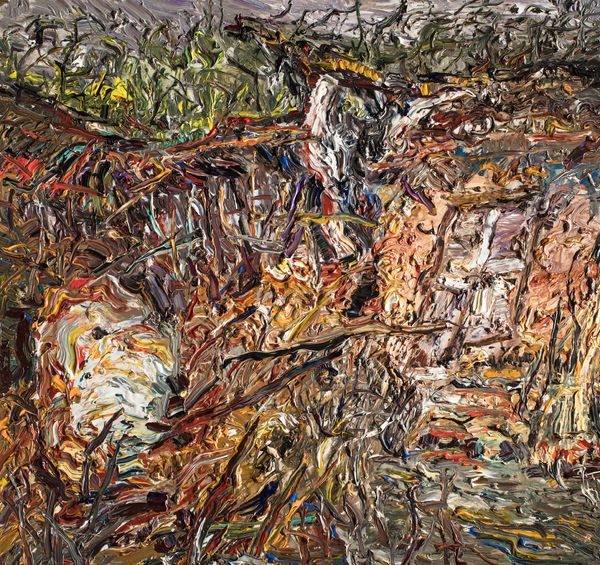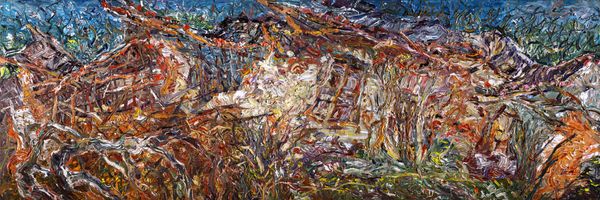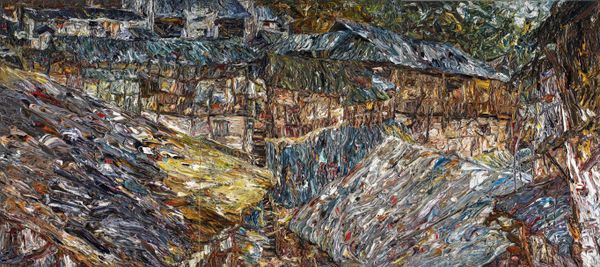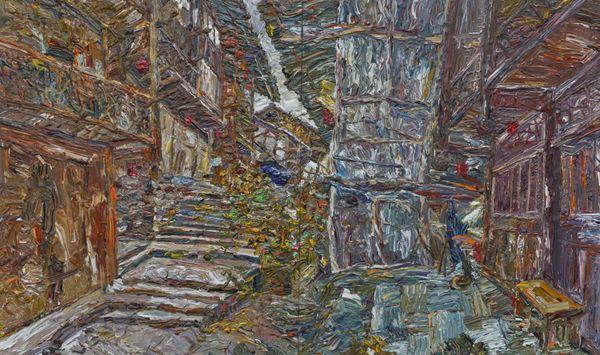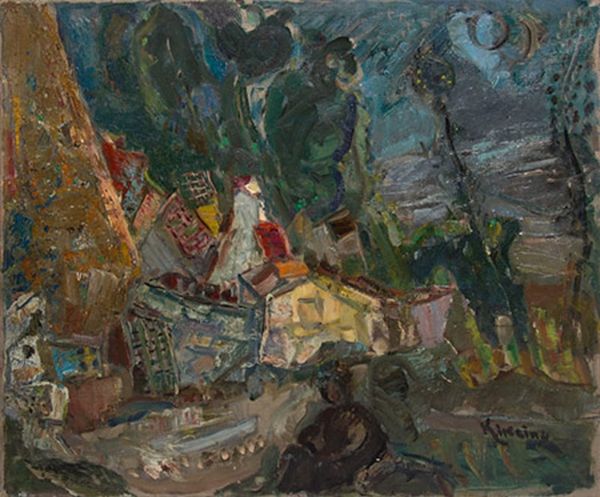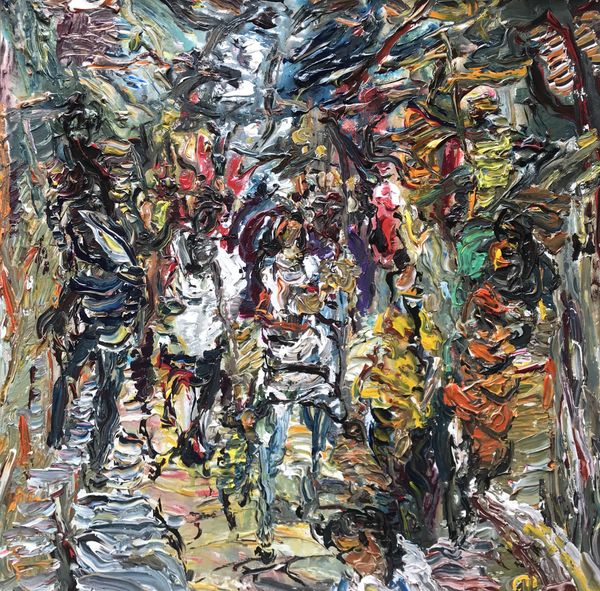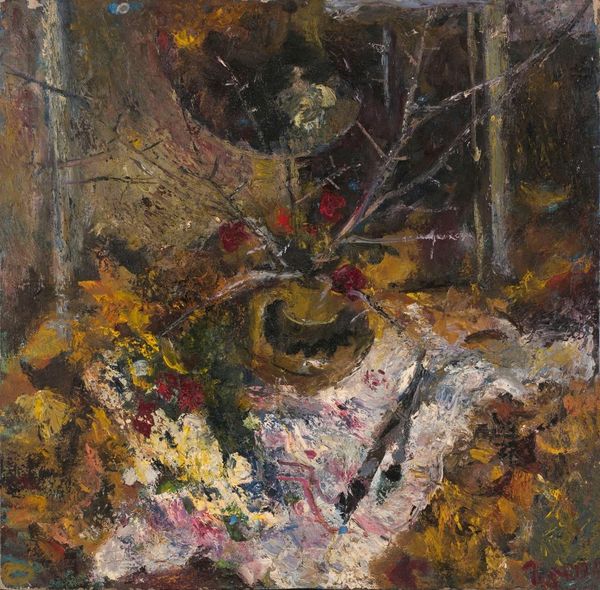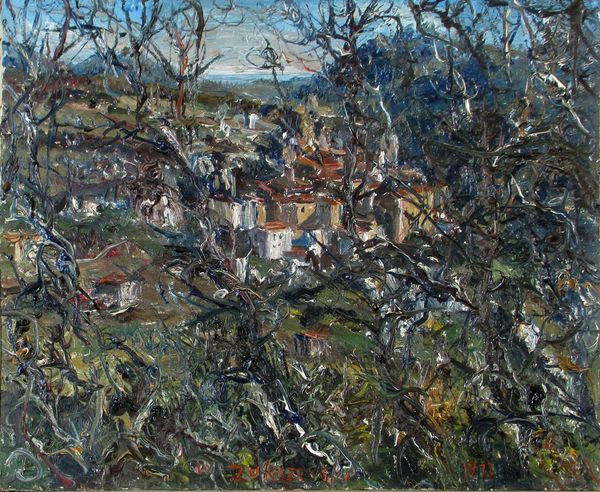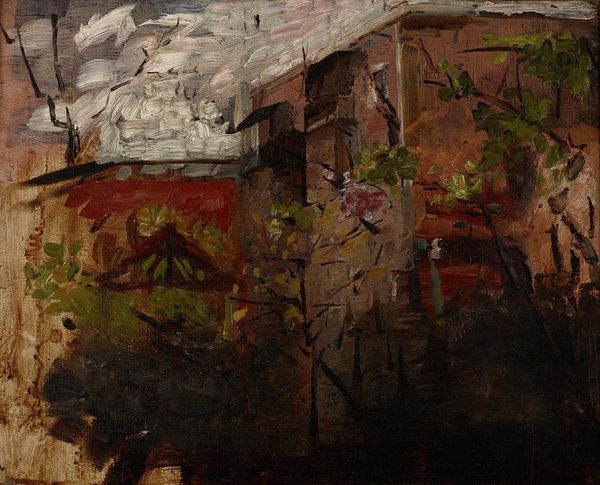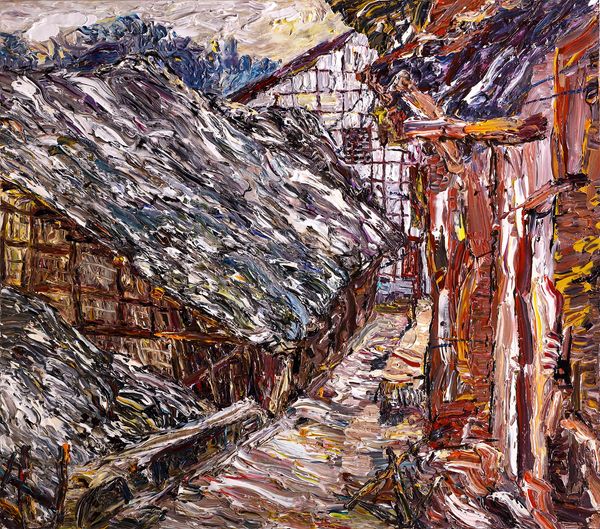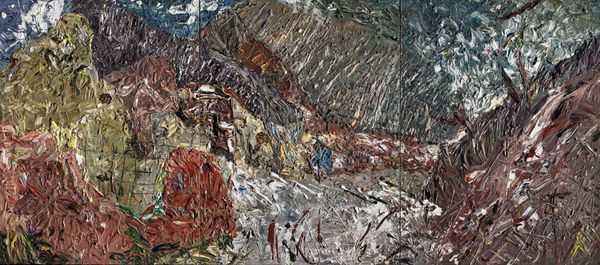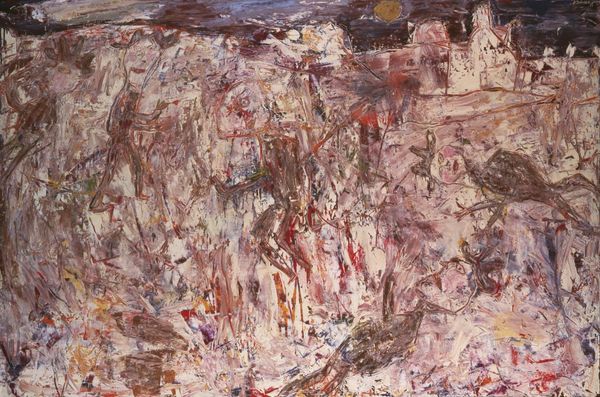
Copyright: ARTERA: FROM ARTIST
Editor: This is "Tapping Rhythm’s Tone" by Wang Xinfu, created in 2017 using acrylic paint. I’m struck by how densely textured it is—it feels like I could almost reach out and touch every stroke. What do you make of it? Curator: The impasto application of paint certainly commands attention. Note the interplay between light and shadow created by the three-dimensionality of the pigment. How does this materiality affect your reading of the overall composition? Editor: It makes me feel a little lost, to be honest. It’s almost overwhelming to look at because there aren't very many smooth surfaces where my eyes can rest. Curator: Precisely. The lack of planar resolution encourages a phenomenological reading. Forget the 'what' and feel the 'how'. Consider the relationship between color and form; areas of muted gray-brown yield to unexpected bursts of teal and rose, generating a compositional tension. The artist’s method seems almost sculptural in its manipulation of paint. How do you see these separate components building a greater experience? Editor: So it’s less about identifying specific objects and more about experiencing the push and pull of the different colors and textures against each other? Almost like the artist is conducting the tempo? Curator: Indeed. Disregard representational space and concentrate instead on the formal dynamism. What happens when you focus solely on the interplay of textures? Do any particular lines or masses feel dominant? Editor: That’s a really interesting way of putting it! Now, looking at the relationships between colors rather than trying to decode them opens this artwork up. Curator: Exactly. By analyzing formal components rather than representational value, we move closer to understanding the intrinsic qualities within "Tapping Rhythm’s Tone".
Comments
No comments
Be the first to comment and join the conversation on the ultimate creative platform.
